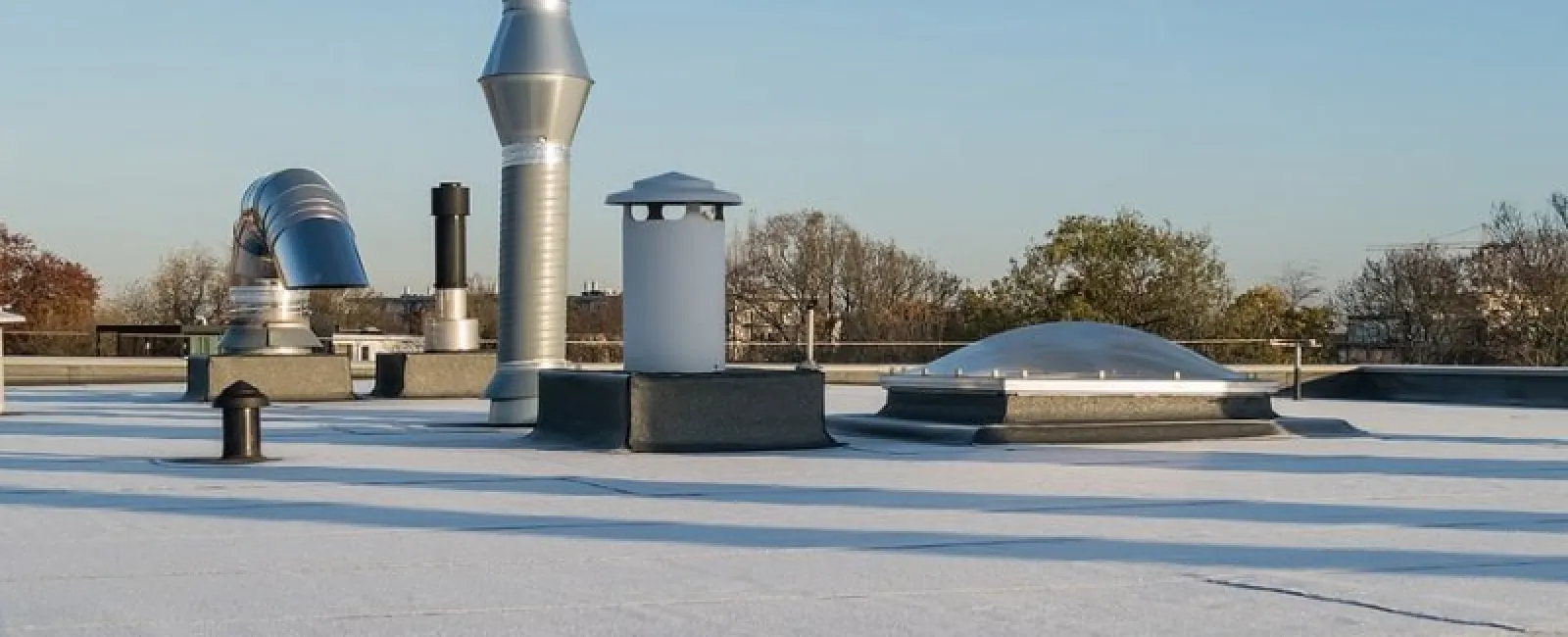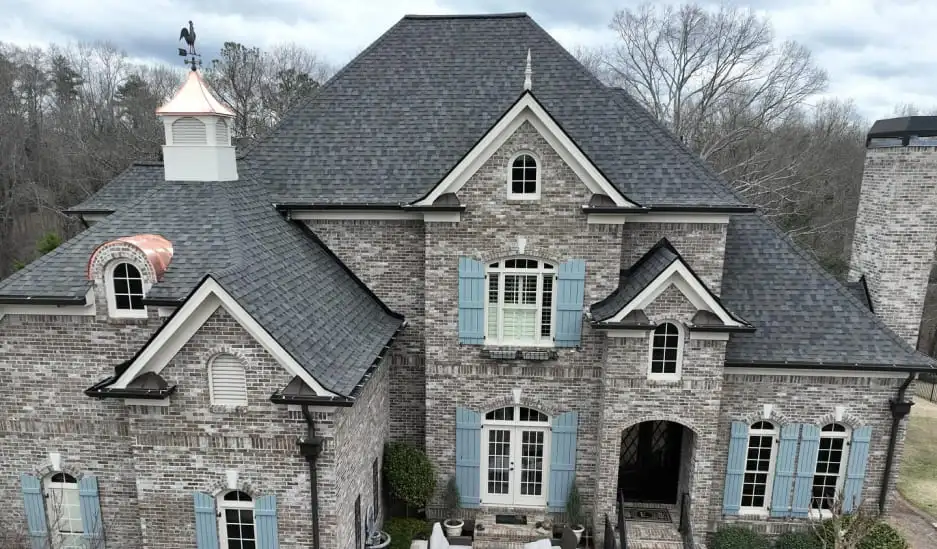Although most commercial buildings use flat roofs, there are several different commercial flat roof types. There are notable differences between them in terms of how long they last, their strengths and their weaknesses. It’s essential to know the differences between these types to properly maintain them and to help increase their life span. Here are seven of the best commercial roof types.

Built-Up Roofing
Built-up roofing is one of the more popular types of roofs on commercial buildings. Composed of different layers of tar and gravel, built-up roofing gives you the flexibility in being able to choose the number of layers that get installed. Although it’s one of the oldest commercial roofing systems, it’s still popular today due to its cost efficiency and UV ray resistance. This roofing system also offers excellent waterproofing capabilities due to the lack of seams, joints and other weak spots. Built-up roofing comes up short when it comes to lifespan. The average lifespan is anywhere between 15 and 20 years, although it can reach a life of 30 years if properly taken care of.
Metal Roofing
Commercial metal roofing is popular due to its durability, which can help it last up to 70 years. The fire resistance and strong material can protect roofs against falling tree branches and harsh weather like heavy snowfalls, high winds, hurricanes and hailstorms. There are different metal materials to choose from, like galvanized steel, aluminum, tin and copper. With metal roofing, you get a stylish and mesmerizing roof that can protect commercial buildings against the elements for years. On the downside, due to the quality of metal and its durability, metal roofing often has a high price that comes with it. It’s also susceptible to corrosion under certain circumstances.
Modified Bitumen Roofing
Modified bitumen roofing is commonly used in low-slope commercial roofing and uses a two-ply system made of asphalt. Like built-up roofing, it has several layers that help reinforce it and provide a competitive advantage over other types of commercial roofs. Modified bitumen roofing (also known as “mod-bit” roofing) offers excellent waterproofing, UV resistance and insulation. If you expect a lot of activity on the roof, this roof system is ideal. Unfortunately, similar to other commercial roofing solutions, it does have a shorter roof life span of between 15 and 20 years.
Green Roofing
A green roof consists of vegetation that is installed over multiple layers of roofing material. The benefits of green roofs don’t only pertain to the environment either; there are lucrative financial incentives for companies that decide to implement this roofing system. Some local governments offer tax incentives to companies, saving them money on their yearly taxes. Additionally, green roofs often provide good insulation to buildings, lowering the costs of energy bills. Apart from protecting buildings against UV rays, green roofs are also good at reducing excessive moisture on a roof and preventing water runoff since the vegetation soaks up much of the water. Some disadvantages of green roofs are that they require ongoing maintenance and can be costly to install.
Spray Polyurethane Foam Roofing
This type of commercial flat roofing uses spray polyurethane foam (SPF) material that, as its name implies, is sprayed onto a roof as a liquid before it expands into foam. While not as common today, it was prevalent when it first came out in the ’70s. It’s flexible due to its ability to be used in any type of climate or weather. You can expect an SPF roof to last over 50 years if taken care of properly. Luckily, it doesn’t require much maintenance or repair, unlike other commercial flat roof materials.
EPDM Roofing
Ethylene propylene diene methylene (EPDM) roofing consists of a roofing membrane made of dark synthetic rubber. It’s easy to install, and it offers excellent protection against the weather, especially in colder climates. This roofing system has a long lifespan of up to 50 years due to its durability; however, since the rolls tend to be black, it will easily absorb heat, which can cause it to break down and lead to water leaks in climates like Georgia. You can always buy the rolls in a different color, but this will add to the cost. It’s also not the best at handling the weight of people walking on it or impacts from tree branches.
Shingles Roofing
Although more commonly used in residential homes, there are still commercial buildings that use shingles. This type of roofing material isn’t used for flat roofs but instead for commercial roofs with steep slopes. The shingle material can be made of asphalt, ceramic, slate, plastic and other options. The most significant advantage of shingle roofs is that they have a flexible design, which is one of the main reasons they are used in commercial buildings. They are also quite affordable since they’re easy to install and repair. The downsides are that shingle roofs are susceptible to damage in warm weather, and they don’t provide the best insulation.



